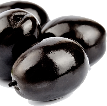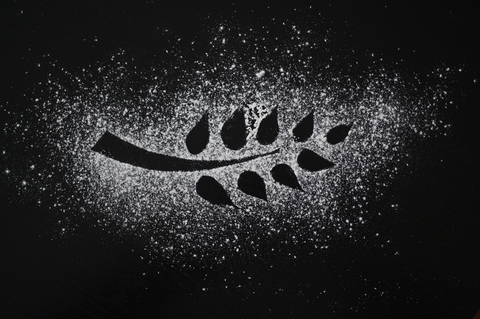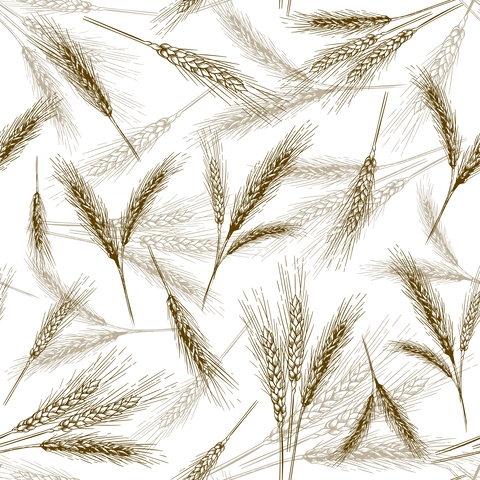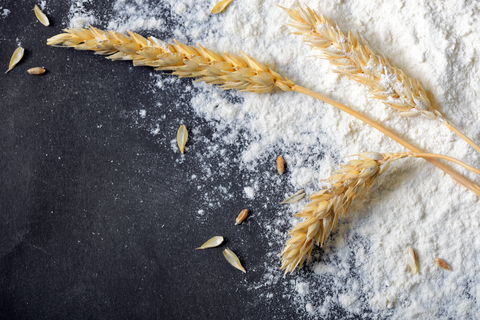







No Grain, No Pizza

 2355 x views
2355 x views
As a pizza baker, you might not think about it, but a package of pizza flour from an Italian mill doesn't necessarily contain only wheat from Italy. Wheat is indeed grown in Italy, but the Italians import most of the soft wheat (see the next paragraph) they process. This wheat often comes from other EU countries such as France, Germany, and Austria, or from the United States and Canada. So your package of flour could literally contain wheat from all over the world. It's also not necessarily always a single wheat variety. Your flour could be a blend of different wheat types. You simply don't know; it rarely, if ever, appears on the packaging.
Occasionally, the miller does provide an indication on the packaging. For example, it might say: 100% Grani Italiani. In other words: all the grain comes from Italy. The country of origin is then clear. But you still don't know exactly what kind of wheat and how many different varieties are in your package of pizza flour. That's the secret of the mill.

Soft and Durum Wheat
Wheat can be divided into:
Soft wheat (Triticum aestivum) is the most widely cultivated wheat variety worldwide. It is also known as common wheat or bread wheat. Soft wheat has a soft endosperm (the core of the grain) whose starch granules break easily during milling. This allows the miller to make flour from it. Soft wheat contains gluten-forming proteins, making it very suitable for making bread and pizza dough. The average protein content is 12%, but this percentage can be lower or higher depending on the variety, the location where the grain grows, and the weather and nutrients it receives during growth.
Hard wheat (Triticum turgidum durum), also known as durum or pasta wheat. Durum means "hard" in Latin. Its main characteristics: the hardness of the grain (hence the name), a high protein content, a golden yellow color, and a nutty flavor. Despite its high protein content, durum wheat does not produce a particularly strong gluten network.
Not all proteins are the same.
That brings us to the other important characteristic of wheat: proteins. As pizza makers, we need proteins to form the gluten network in our dough. This web of proteins traps the gas within the dough, causing it to rise. The amount of protein is important, but the quality of the proteins is just as important.If you look at the nutritional information table on a package of flour, you'll always see the protein content listed. For wheat, that percentage is somewhere between 8% and 15%.
A lower protein percentage often means less gluten formation. That's fine for cookies, but not for pizza dough. In that case, you want more protein: 12% or higher. More protein usually also means a firmer gluten network and therefore a better ability to trap air in the dough.
The amount and quality of protein vary by grain variety and are determined by:
TIME OF SOWING: sow in spring for harvest in August/September (spring wheat) or sow in autumn for harvest in July/August (winter wheat). Winter wheat generally produces higher yields than spring wheat because it has a longer growing season.
AREA: A continental climate produces wheat with higher-quality protein than a maritime climate.
FERTILIZATION: Higher protein content requires more nitrogen; sulfur has a significant impact on protein quality.
AMOUNT OF PRECIPITATION: There is a greater risk of mold in wet conditions during flowering, and grains may germinate prematurely (bolting). This negatively impacts quality.
TEMPERATURE: Is it warm or cold during the growing season? Some geographical areas—such as the Netherlands and Belgium—on average produce grains with lower protein percentages. Other regions, such as Manitoba in Canada, produce wheat with high-quality proteins.
Types of Protein
Pizza flour contains four types of protein: albumin, globulin, gliadin, and glutenin. Albumin (12%) and globulin (8%) together make up approximately 20% of the proteins in the wheat grain. They are both soluble and play a crucial role in the rising of your dough. The remaining 80% of the proteins consists of gliadin (40%) and glutenin (40%). These are insoluble and together are called gluten. Fun fact: gluten is the Latin word for glue.- Gliadin determines the extensibility of your dough and ensures its binding.
- Glutenin gives your dough strength, firmness, and elasticity.
Suppose you make two identical dough balls from both packets of flour. You let each ball rise for eight hours. With supermarket flour, your dough ball will collapse after just a few hours. With Italian pizza flour, you'll have a beautifully risen ball after eight hours, which will even hold up for a few hours longer. Yet both dough balls contain the same amount of protein.
Conclusion: not all proteins are the same.
That's precisely why millers blend different types of wheat. This allows them to control both the quantity and the quality of the proteins. The miller thus determines how "strong" your dough will be.






 0
0